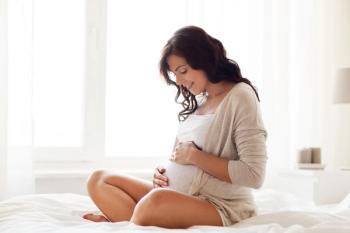Realization of pregnancy preferences varies by sociodemographic characteristics, according to a recent study published in JAMA Network Open.1
Experts have highlighted the importance of evaluating the link between childbearing desires and incident pregnancy, with knowledge of how sociodemographic factors influence this link, allowing inequities to be discovered. However, robust pregnancy preference data is needed to estimate proportions of pregnancy within pregnancy desire grouping.
Key takeaways:
- The likelihood of becoming pregnant despite personal preferences varied across age, parity, race and ethnicity, education, employment, and relationship status.
- Only 3% of individuals with high Desire to Avoid Pregnancy (DAP) scores experienced a pregnancy, compared with 25% of those with low DAP scores, showing a clear link between preference and outcome.
- Participants aged 18 to 24 years and those reporting no or low religiosity had the highest mean DAP scores, reflecting greater desire to prevent pregnancy.
- Among participants with high DAP scores, pregnancy probability was 3% for those with a bachelor’s degree or higher and lower among White individuals compared with Hispanic or Black participants.
- Differences in realizing pregnancy intentions suggest that structural and social barriers continue to impact individuals’ ability to control if and when they become pregnant.
“Research examining these associations, however, has been hindered by study design and measurement challenges,” wrote the investigators. “Population-based estimates of US pregnancy rates by degree to which individuals desired pregnancy rely on retrospective data and piece together data across sources.”
Measuring pregnancy preferences and desire to avoid pregnancy
The study was conducted to evaluate the link between pregnancy preferences and incident pregnancy across sociodemographic groups. Longitudinal data from November 2016 to June 2023 was obtained from the Surveys of Women.
Survey recipients were aged 18 to 44 years and self-identified as female, transgender, gender expansive, or something else. Waves of data collection included wave 1 at baseline, waves 2 through 4 follow-up surveys, and a wave 5 cross-sectional endline survey. Patients completed follow-up surveys approximately every 1 to 2 years.
Pregnancy and childbearing preferences were considered independent variables and were measured using the 14-item Desire to Avoid Pregnancy (DAP) scale. These items assessed patients’ feelings about potential pregnancy in the next 3 months and about having to raise a child within the next year.
Responses were measured on a 5-point Likert scale from 0 to 4, with greater scores indicating the strongest desire to avoid pregnancy. Low DAP was defined as 1.5 or under, midrange DAP as over 1.5 up to 2.5, and high DAP as over 2.5.
Sociodemographic factors and health characteristics
Incident pregnancy was the primary outcome of the analysis, reported as a binary variable. Sociodemographic characteristics included parity, time-varying age group, cohabitation with a romantic partner, health insurance status, education level, current employment, prior-year birth, religiosity, race and ethnicity, and current employment.
There were 9565 participants included in the final analysis, 48% of whom were aged under 30 years at baseline, and 51% were nulliparous. Living with a partner was reported by 59%, at least some college education by 84%, health insurance by 92%, and current employment by 34% Approximately 1 in 3 were not religious.
Of participants, 66% were non-Hispanic White, 14% non-Hispanic Black, 12% Hispanic, 4% Asian, and 5% multiracial or another race and ethnicity. Excellent, very good, or good health was reported by 94%.
Distribution of DAP scores among participants
A mean DAP score of 2.44 and a median DAP score of 2.50 were reported at baseline. A low DAP score was identified in 21% of patients across all waves, a midrange score in 31%, and a high score in 49%.
Participants who were aged 18 to 24 years, not living with a partner, and of no or low religiosity had the highest mean DAP scores of 2.85, 2.81, and 2.77, respectively. The lowest mean DAP score of 1.99 was reported in primiparous patients.
An incident pregnancy occurred in 14% of participants overall, 25% with a low DAP score, 8% with a midrange DAP score, and 3% with a high DAP score. This highlighted significant differences by DAP score grouping, influenced by age group, parity, prior-year birth, education, employment, cohabitation status, and race and ethnicity.
Probability of pregnancy differences in patients with high DAP scores included:
- -3% from bachelor’s degree or more education
- -1% from being unemployed
- -2% from being White vs Hispanic
- -4% from being White vs Black
“Our findings identify areas of inequity in reproductive autonomy because individuals’ attainment of their pregnancy preferences differed by sociodemographic characteristics,” wrote investigators.
Broader implications for reproductive health inequities
Sociodemographic factors also influence complications during pregnancy, such as gestational diabetes risk, as discussed by Melissa Furlong, PhD, assistant professor in the Department of Environmental Health Sciences at the U of A Mel and Enid Zuckerman College of Public Health, in an interview with Contemporary OB/GYN.2
According to Furlong, women residing in under-resourced areas are more likely to face reduced healthy food access, inadequate health care, and safe spaces for physical activity. These factors may exacerbate existing health vulnerabilities, increasing the odds of gestational diabetes mellitus development.
“You might have poor access to health care just in general, right? So… if you have risk factors before pregnancy, those might be diagnosed,” said Furlong.












